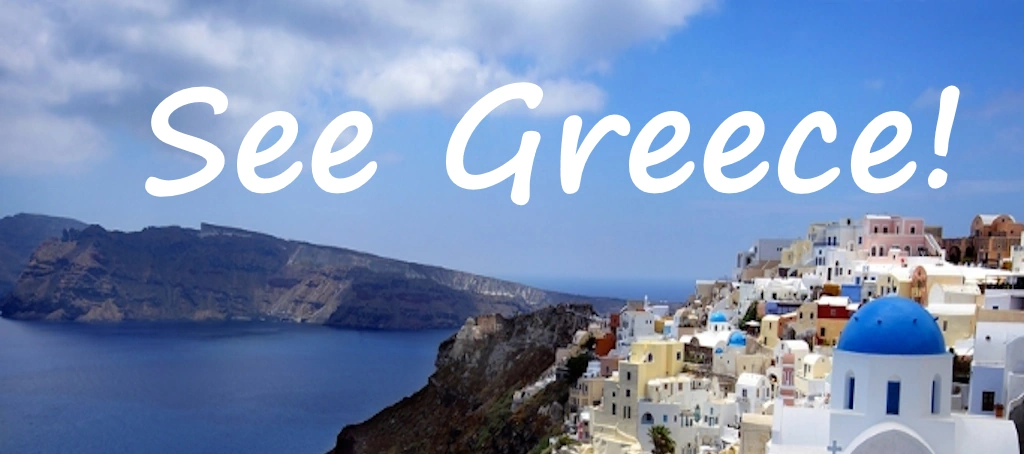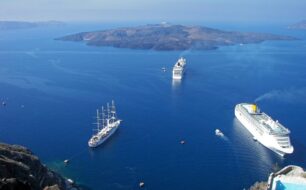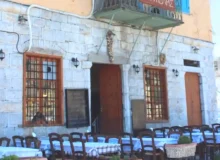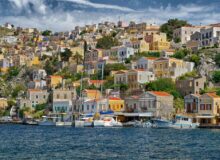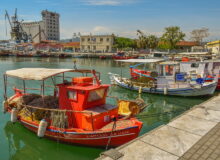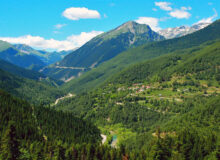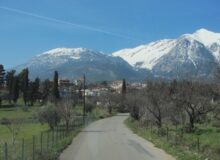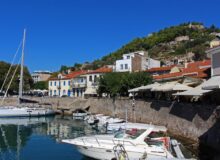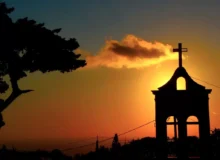The Cyclades, Greece’s dream islands, include Santorini and Mykonos and are famous for white villages, blue domes, beaches and ancient history.

Overview of the Cyclades
The Cyclades, a stunning archipelago in the Aegean Sea, are among Greece’s most famous and beloved destinations. Known for their whitewashed houses, blue-domed churches, golden beaches, and vibrant nightlife, these islands attract millions of tourists each year. Beyond their beauty, the Cyclades are rich in history, culture, and natural wonders. This guide provides an overview of their history, geography, climate, and a complete list of the islands in the group.

Cycladic Islands (in Alphabetical Order)
The Cyclades include numerous islands, ranging from bustling tourist hotspots to secluded retreats. Below is a full alphabetical list of the main islands:
1. Amorgos – Known for its dramatic cliffs and the monastery of Hozoviotissa.
2. Anafi – A quiet, unspoiled island near Santorini.
3. Andros – A lush, green island with waterfalls and hiking trails.
4. Antiparos – A small island near Paros, famous for its cave and relaxed vibe.
5. Delos – A UNESCO-listed archaeological site with no permanent residents.
6. Donousa – A tiny, tranquil island ideal for escapism.
7. Folegandros – A charming island with breathtaking cliffside views.
8. Ios – Popular for its nightlife and sandy beaches.
9. Kea (Tzia) – The closest Cycladic island to Athens, with hiking and diving spots.
10. Keros – An uninhabited archaeological site.
11. Kimolos – A quiet island with unique rock formations.
12. Koufonisia – Two small islands (Pano & Kato Koufonisi) with turquoise waters.
13. Kythnos – Known for its hot springs and traditional villages.
14. Milos – Famous for its lunar landscapes and the Venus de Milo statue.
15. Mykonos – A cosmopolitan island with vibrant nightlife and luxury resorts.
16. Naxos – The largest Cycladic island, with mountains, beaches, and ancient ruins.
17. Paros – A balanced mix of nightlife, beaches, and traditional villages.
18. Santorini (Thira) – Iconic for its caldera views, sunset spots, and volcanic beaches.
19. Schinoussa – A tiny, peaceful island with few tourists.
20. Serifos – A rugged island with a picturesque hilltop Chora.
21. Sifnos – Known for its gastronomy, pottery, and hiking trails.
22. Sikinos – A quiet, traditional island with few tourist facilities.
23. Syros – The administrative capital (Ermoupoli) of the Cyclades, with neoclassical architecture.
24. Tinos – A major pilgrimage site due to the Church of Panagia Evangelistria.
History of the Cyclades
The Cyclades have a history that stretches back thousands of years, playing a key role in ancient Greek civilization and beyond.
Ancient Times
The name Cyclade (from the Greek Kyklades, meaning “encircling islands”) comes from their arrangement around the sacred island of Delos, a major religious and commercial hub in antiquity. The islands were first inhabited during the Neolithic period (around 5000 BCE), but their most famous ancient civilization was the Cycladic culture (3200–2000 BCE), known for its distinctive marble figurines.
Delos became a powerful religious center as the mythical birthplace of Apollo and Artemis. By the 5th century BCE, it was a thriving trade hub under Athenian control. Over time, the Cyclades were influenced by the Minoans, Mycenaeans, and later the Romans.

Medieval & Ottoman Periods
During the Byzantine era, the islands faced pirate raids and were later controlled by the Venetians after the Fourth Crusade (1204). Many fortified castles and churches date from this time. The Ottomans took over in the 16th century, but the islands retained some autonomy.
Modern Era
The Cyclades became part of independent Greece in the 19th century. In the 20th century, tourism transformed the islands, particularly Mykonos and Santorini, into world-famous destinations.

Geography
The Cyclades consist of about 220 islands, though only 24 are inhabited. They are located in the southern Aegean Sea, southeast of mainland Greece. The islands are characterized by:
– Rocky, rugged landscapes with volcanic origins (especially Santorini).
– Arid, hilly terrain with sparse vegetation, dominated by shrubs and olive trees.
– Stunning coastlines, featuring sandy beaches, hidden coves, and dramatic cliffs.
– Traditional architecture, with whitewashed cubic houses designed to reflect sunlight and withstand strong winds.
The Cyclades are divided into smaller subgroups, including the Western Cyclades (e.g., Kea, Kythnos), the Central Cyclades (e.g., Naxos, Paros), and the Southern Cyclades (e.g., Santorini, Anafi).

Climate
The Cyclades enjoy a Mediterranean climate, with hot, dry summers and mild winters. Key features include:
– Summer (June–September): Hot and sunny, with temperatures averaging 25–35°C (77–95°F). The Meltemi (strong northerly winds) provide relief but can affect ferry schedules.
– Spring (April–May) & Autumn (October): Pleasant weather, ideal for hiking and sightseeing, with temperatures around 18–25°C (64–77°F).
– Winter (November–March): Cool and rainy, with temperatures around 10–15°C (50–59°F). Many tourist facilities close during this season.
The best time to visit is May–June and September–October, when crowds are smaller, and the weather is still warm.

Why Visit the Cyclades?
Beyond their natural beauty, the Cyclades offer:
– Rich cultural heritage (ancient ruins, medieval castles, traditional festivals).
– Diverse activities (hiking, sailing, diving, wine tasting).
– World-class cuisine (fresh seafood, local cheeses, and wines).
– Varied atmospheres, from the party scene of Mykonos to the serenity of Anafi.
Whether you seek adventure, relaxation, or history, the Cyclades have something for every traveler.

Conclusion
The Cyclades are a dream destination, blending breathtaking landscapes, deep history, and vibrant culture. From the world-famous Santorini and Mykonos to hidden gems like Donousa and Schinoussa, each island has its own unique charm. Whether you explore ancient ruins, relax on pristine beaches, or wander through whitewashed villages, the Cyclades promise an unforgettable Greek island experience.
